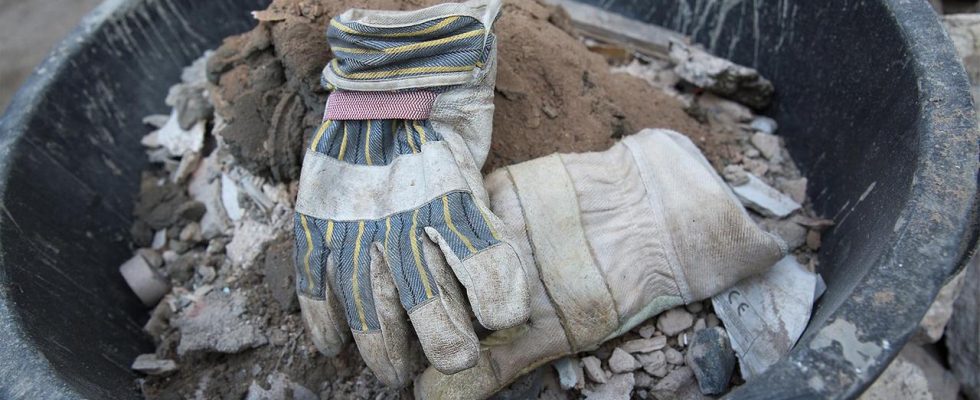It’s not just interest and material costs that are causing construction costs to continue to rise: there are also countless specifications and guidelines. Are all the regulations really necessary – or are they primarily price drivers?
More than 700 new apartments are being built in Dortmund’s Kronprinzenviertel – but it remains to be seen how affordable the rents will ultimately be. Because the costs of construction are exploding. And from building contractor Dirk Salewski’s point of view, this is also because ever higher standards are required, for example for very thick walls and ceilings.
Building for less than 17 euros in rent per square meter is now hardly possible. Because very thick walls and ceilings require almost twice as much material. And twice as much material costs twice as much money, as even non-experts quickly realize. And the rising prices for cement, concrete and steel are further exacerbating the situation.
Everything has to be standardized
Although many building standards come from the EU in Brussels, the German specifications regularly go one step further. Almost ten years ago, the so-called “Construction Cost Reduction Commission” criticized the increasing requirements. Nothing has changed since then.
Over 3,900 apply to the construction industry alone: from the height of stairs to noise protection to the sloping roof. This all comes together at the German Institute for Standardization. The registered association is commissioned to organize the processes: transparently and in the public interest. 33,500 standards measure our entire lives.
Everything is regulated very precisely here. And how standards are created is of course also determined – namely in working committees. There, experts from business, research, consumer protection, environmental associations, unions, experts and the public sector discuss until the result suits everyone.
Norms that contradict each other
The number of standards has been increasing for years, and there are always additions to the 3,900 in the construction industry. Architects like Christine Edmaier complain that construction times and costs are constantly increasing as a result. Especially since there are a whole series of norms that conflict with one another.
Theoretically, architects like her should know all of these standards. But everyone knows that that is completely impossible. An example is the accessibility standard – a sensible goal for everyone. But a ground-level entrance poses problems because it could lead to water running into the house. “I can compensate for this with a rain gutter that is located right in front of the entrance,” explains the architect.
But that poses new problems: “To be completely safe, I would actually have to connect this gutter to the sewer system. And if possible, I would also have to heat it. It is also recommended that I have to build a canopy and that the slope of the “The house should go away. These are all so-called compensation measures for the fact that I don’t comply with something,” explains Edmaier.
Standards come from industry
Standards are actually just recommendations, but for liability reasons they often become mandatory – through the back door, so to speak. Edmaier worked in the Chamber of Architects for a long time and is therefore familiar with the processes: “The standardization process in Germany is one that comes mainly from the construction industry or from industry in general.”
And when there is a new standard, the industry creates expensive ways to comply. “That is perhaps also an important aspect of the standards: that these high requirements can be met regularly with very complicated and expensive products from the construction industry, which we then have to use,” says Edmaier.
Non-transparent committees
While the construction industry experts discuss in the working committees until a common solution is reached, the higher-level so-called steering committees are the first point of contact in the event of conflicts and the question of staffing. But the composition of the working committees is not transparent enough for these committees either – they sometimes do not know who exactly has a say in a particular standard.
The Dortmund building contractor Salewski explains that the housing industry is often underrepresented in the committees, even if they have to pay for the results in the end: “This is due to the system in which everyone who has the money and the staff to buy into a committee. And all the people who don’t have the money and the staff don’t buy in either.” He sees this as the core problem: “The big ones can do it, and the little ones fall behind.”
Antitrust law as an excuse
But why are the participating institutions and people not publicly announced? Upon request from plus minus explains Daniel Schmidt from the German Institute for Standardization (DIN), “that companies are sometimes not prepared to name horses and riders. Because there are corresponding fears that one can be vulnerable under antitrust law. Or is exposed to accusations that one’s interests are compromised to have implemented it inadequately.” In addition, participants could be influenced from outside if the institutions or people involved were known.
Antitrust law expert Christian Kersting from the University of Düsseldorf cannot follow DIN’s argument: “From an antitrust perspective, transparency is important. This is emphasized again and again in the Commission’s guidelines.” That’s why it makes “very sense” for an organization like DIN to name “horses and riders” – that is, to say who is involved in this standardization work.

